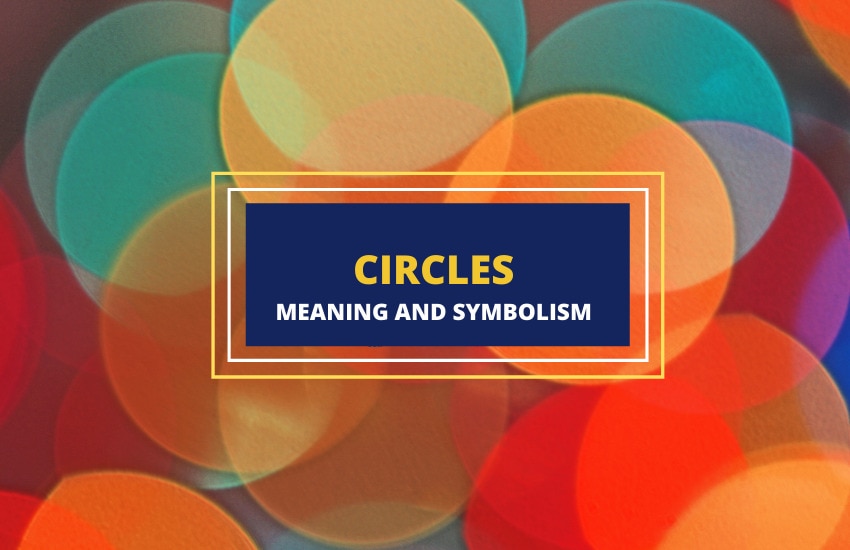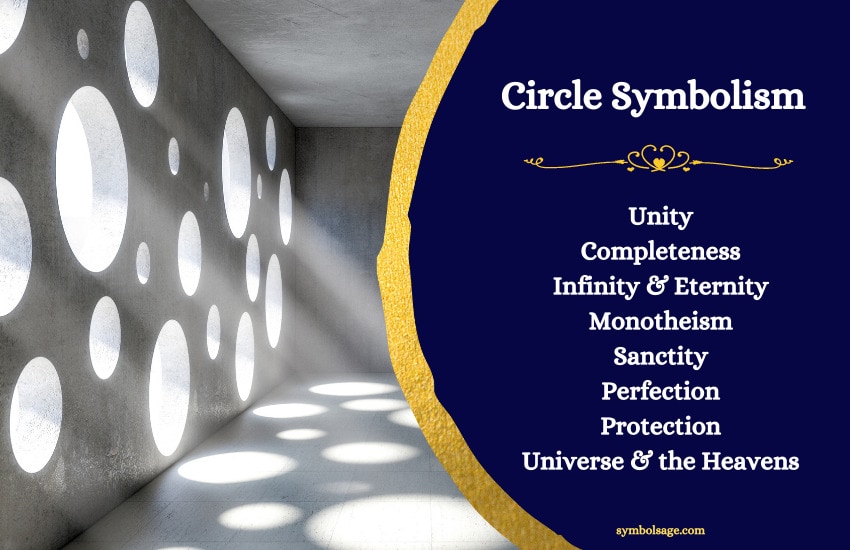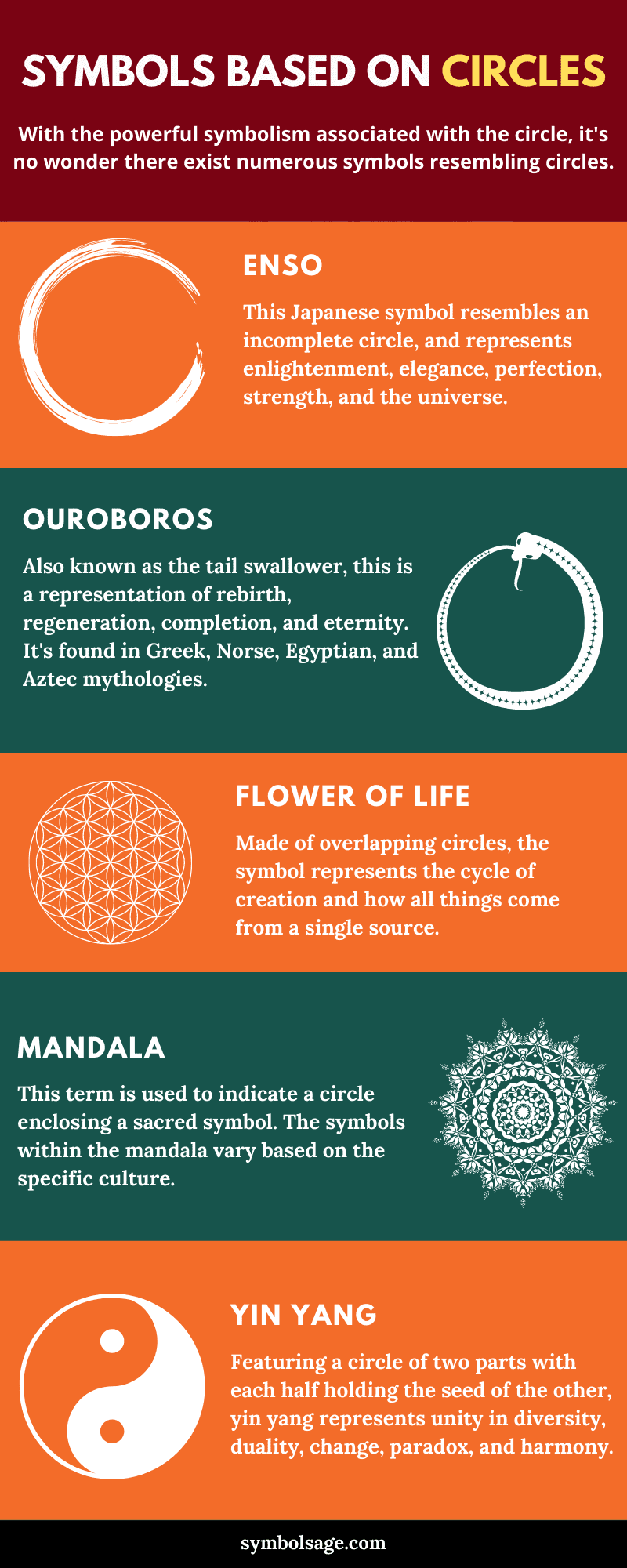
Table of Contents
Circles are not just geometrical symbols but are also what makes life possible. The sun is a circle, and so is the moon, and even more importantly, so is the cycle of life. Circles are also an intricate part of nature; time occurs in repetitive cycles in the form of days, months, and years, and seasons of the year occur in repetitive cycles of spring, summer, autumn, and winter. It’s, therefore, no wonder that the astronomer-physicist Chet Raymo says that all beginnings wear their endings.
What Are Circles?
According to the Oxford dictionary, a circle is a plane figure, round in shape whose boundary, also known as a circumference, is equidistant from the center. As Pythagoras, the ancient Greek philosopher, and mathematician, puts it, circles are the most creative form. He goes ahead to name them “monad,” which means “a single unit” because circles lack a beginning and an end, nor do they have sides or corners.
What Circles Symbolize

Being one of the oldest geometric symbols, the circle has earned itself a name and respect in both education and culture. It’s a universal sign, with almost all cultures revering it as a sacred symbol. The circle represents limitless things, among them eternity, unity, monotheism, infinity, and wholeness.

- Unity – In some cultures, when people want to come together and support one another, they form a circle. That way, everybody is visible to everybody else, meaning they can communicate openly and extend a sense of togetherness. Examples of unity circles include the players of teams before a match, the sitting arrangement of addiction support groups, prayer groups holding hands in circles, and others.
- Monotheism – Several cultures view the circle as a symbol of the existence of the one and only God they subscribe to. For instance, Christians refer to God as the alpha and omega, which means the beginning and the end. In this case, God is seen as a complete circle. In Islam, Monotheism is represented by a circle with God at the center.
- Infinity – The circle is a representation of infinity because it has no end. It symbolizes universal energy and the continuity of the soul. The ancient Egyptians chose the ring worn on the finger as a way to symbolize the eternal union between a couple, a practice we still carry on to this day.
- Divine Symmetry – Because it provides perfect balance, the circle is seen to be symbolic of divine symmetry. It encompasses the universe, perfectly balanced with the divine ruler at the very center.
- Wholeness – In a circle, the beginning meets the end, and nothing is lost in between, which signifies completeness and wholeness.
- Returning Cycles – The returning cycles of nature are seen to be cyclic. This is partly because the most obvious of them, day and night, is caused by the shifting of the sun and the moon, both of which are circles in shape.
- Perfection -This meaning is carried from Buddhist philosophy, which sees a circle as a representation of perfect unity with primal principles.
- Sanctity – This symbolic meaning is seen in Judeo-Christianity, where deities and people considered holy are presented with haloes around the heads.
- Heavens – This meaning comes from Chinese symbology, which uses the circle as a representation of heaven.
- Protection – In numerous cultures and religions, circle symbols indicate protection. For example, in occult practices, standing within a circle is believed to offer protection from supernatural dangers. Another example of this is found in Celtic culture, where a circle of protection (known as the caim) is cast around two people who are marrying each other to protect them from any external influence.
- Containment – With the aspect of protection also comes containment. A circle is a representation of keeping contained what is inside. A good example of this is a ring; whether it is a wedding ring, religious or cultic, the ring stands for a pledge of fidelity. It’s a vow to keep contained aspects of the respective vow taken.
- The Sun – In astrology, the sun is represented as a circle with a dot in the middle. The dot stands for centralized power that governs all universe encompassed within the circle.
Symbols Based on Circles

With the powerful symbolism associated with the circle, it’s no wonder there exist numerous symbols and artifacts resembling circles and shapes. Some of these symbols include:
- The Enso – This Japanese symbol looks like an incomplete circle that has been calligraphed with paint. Also connected to Zen Buddhism, the symbol represents enlightenment, elegance, perfection, strength, and the universe.
- The Ouroboros – Also known as the tail swallower, this symbol is drawn in three versions; a snake swallowing its tail, a dragon swallowing its tail, or the two creatures swallowing each other’s tails. The ouroboros is found in Aztec mythology, Norse mythology, Greek mythology, and Egyptian mythology. It is a representation of rebirth, regeneration, completion, and eternity.
- The Flower Of Life – This symbol is made up of nineteen or sometimes seven overlapping circles that form a pattern of perfectly symmetrical flowers. Although it is found in several cultures, the flower of life dates back to ancient Egypt and is representative of the cycle of creation and how everything comes from a singular source. The Flower of life is believed to be the universal energy within which all existing knowledge is stored. This knowledge can be accessed through meditation over the symbol. It’s also believed that within the flower is a hidden symbol, the blueprint of life, that holds the most sacred and most significant patterns of the universe.
- The Labyrinth – This symbol comprises an arrangement of intertwined paths that take different directions but eventually lead to the same point at the center. Although the most popular references to it are from Greek and Roman mythology, the labyrinth is found in several other cultures. It represents our different paths that inevitably lead to the same destination.
- The Mandela – This term is used to indicate a circle enclosing a sacred symbol. The symbols within the mandala vary based on the specific culture.
- The Caim – This symbol looks like two circles woven together and is from Celtic culture. The caim circle was cast around the bride and groom during weddings as a form of protection for the newlyweds. Besides protection, it symbolized wholeness, communion, and attachment to the universe.
- The Yin And Yang – This symbol is also known as the Tai Chi Symbol and is presented as a circle divided into two equal parts by a curved line. One side is white (yang) while the other is black (yin), and there is a dot near the center of each half. The dot in the yin is white while the dot on the yang is black, which is meant as an indication that the two halves carry each other’s seed. This symbol represents unity in diversity, duality, change, paradox, and harmony.
Wrapping Up
The circle is such a prominent symbol in nature, culture, and life, so much so that its symbolism is inexhaustible. From what we have seen, the universe itself is circular, and life is powered from its core. This, coupled with the cycle of life, is a reminder that all that comes around goes around, and thus we need to embrace our diversity as it leads us all to the same destination.







